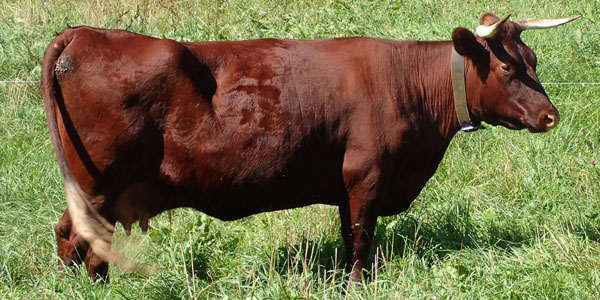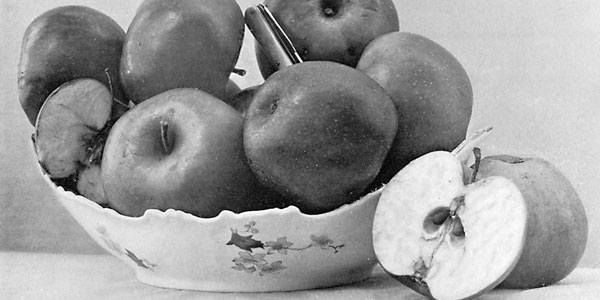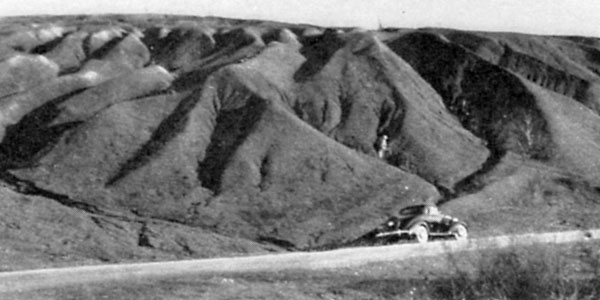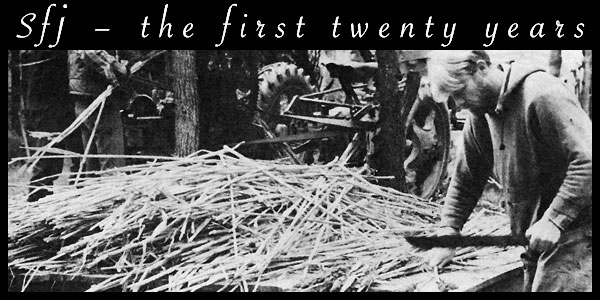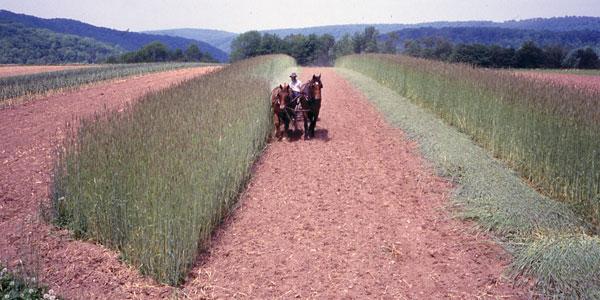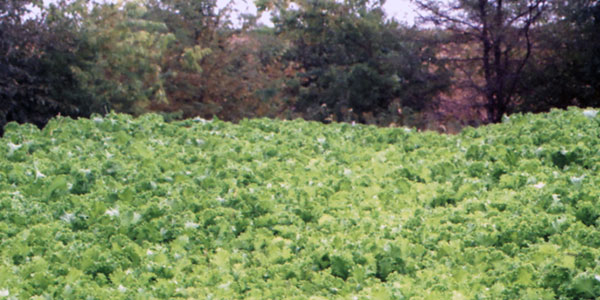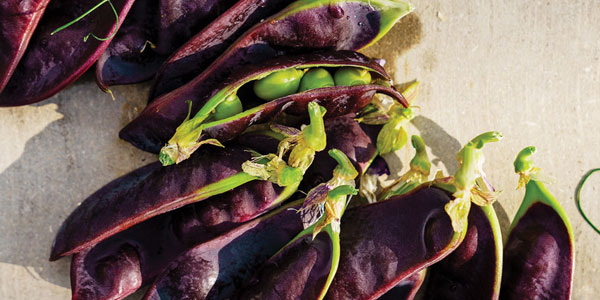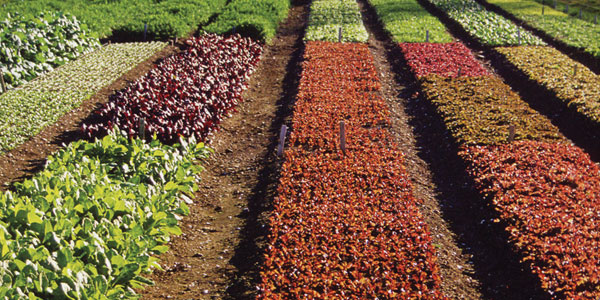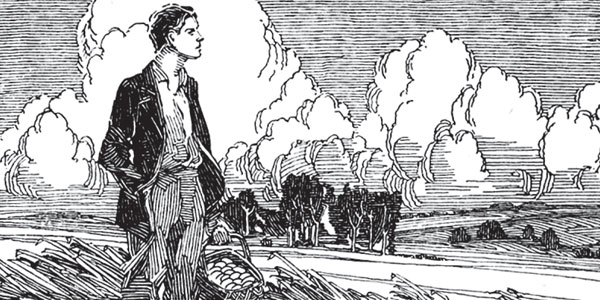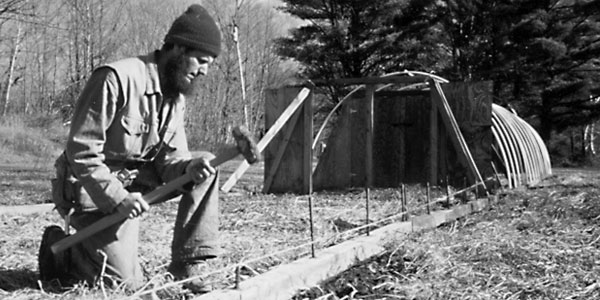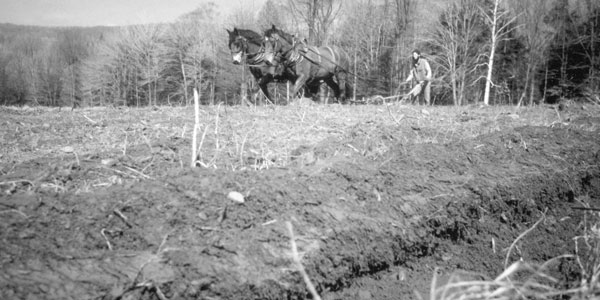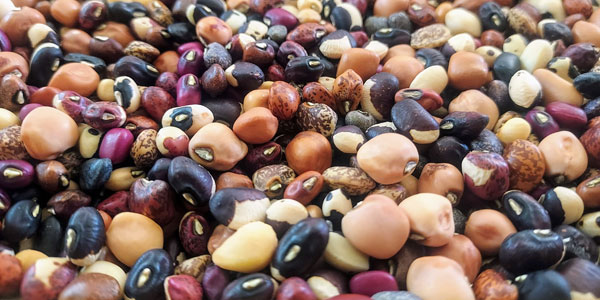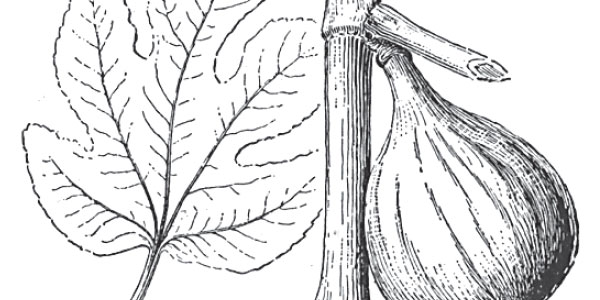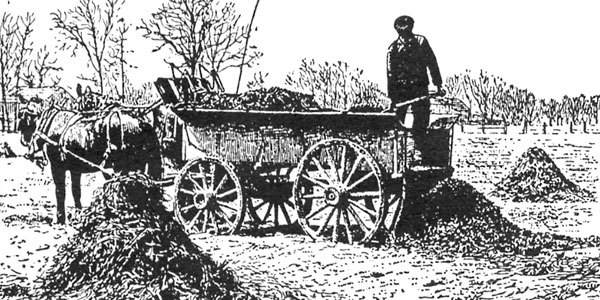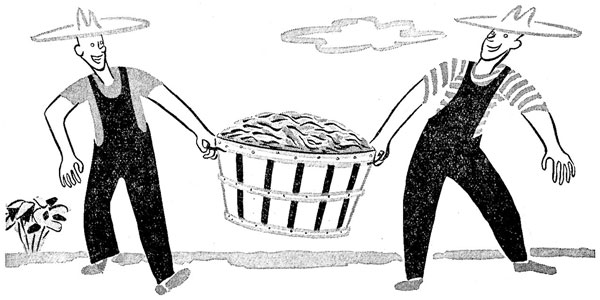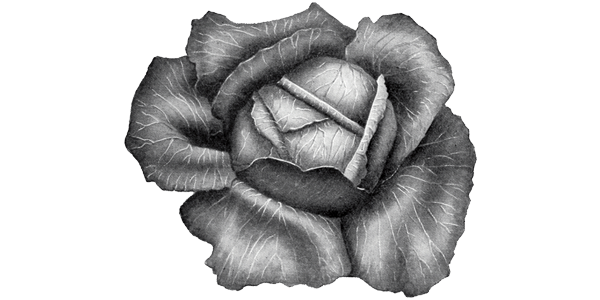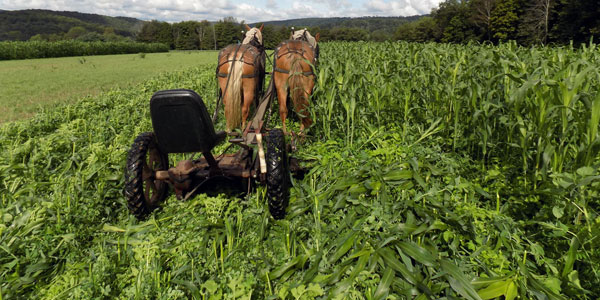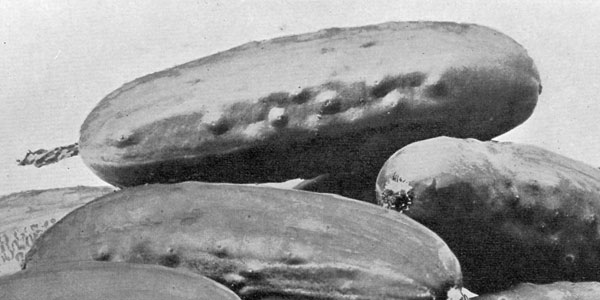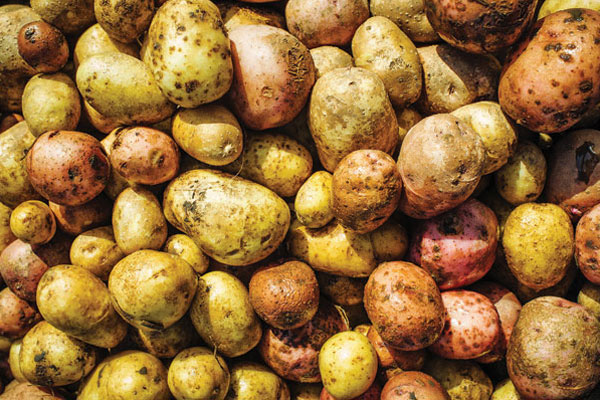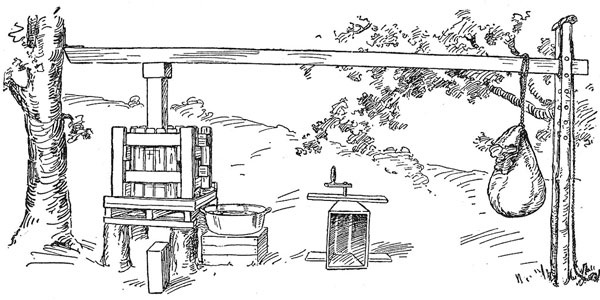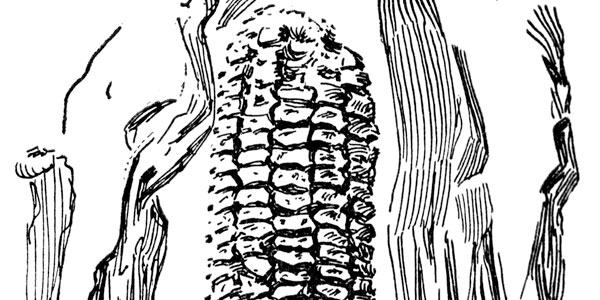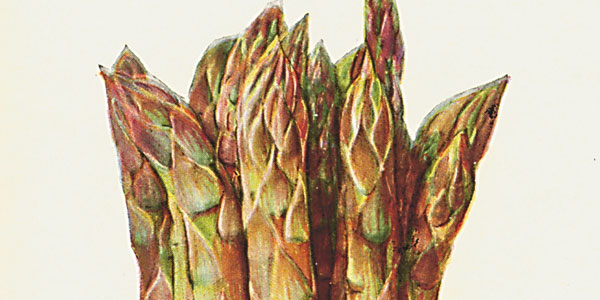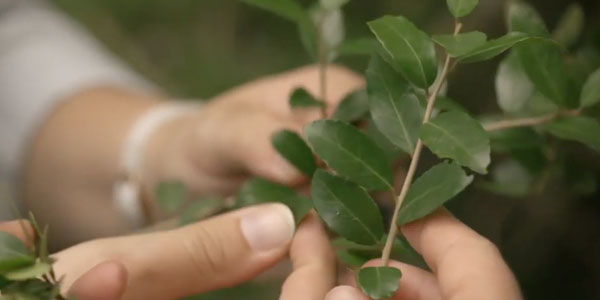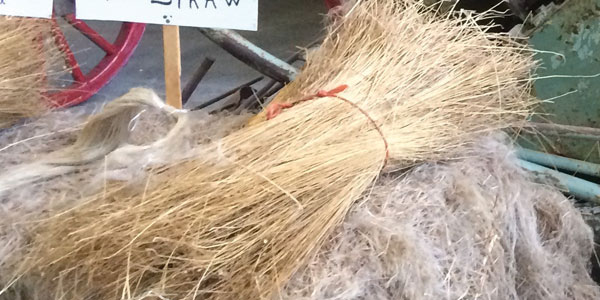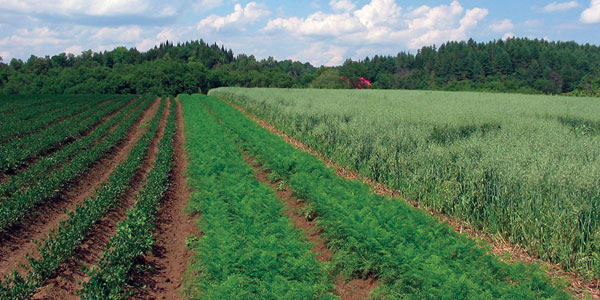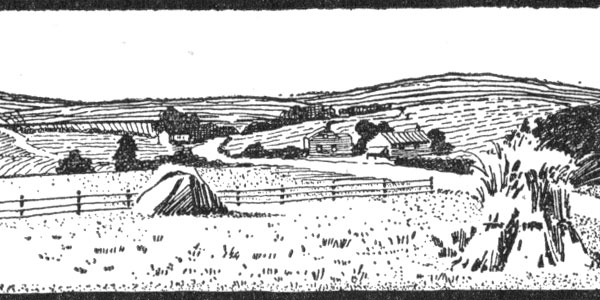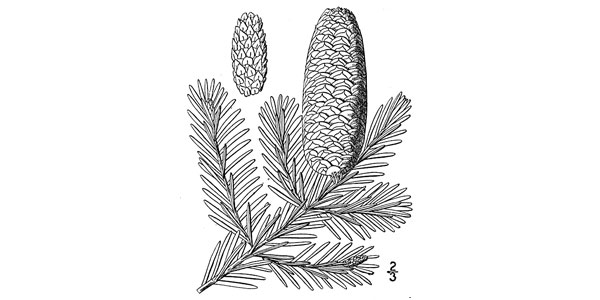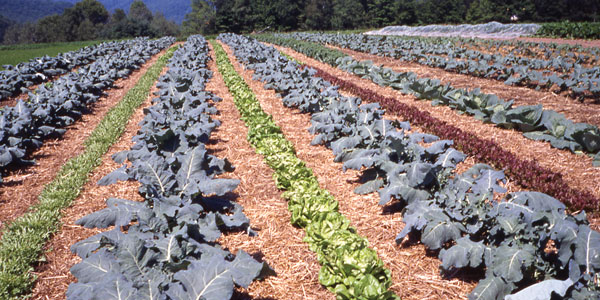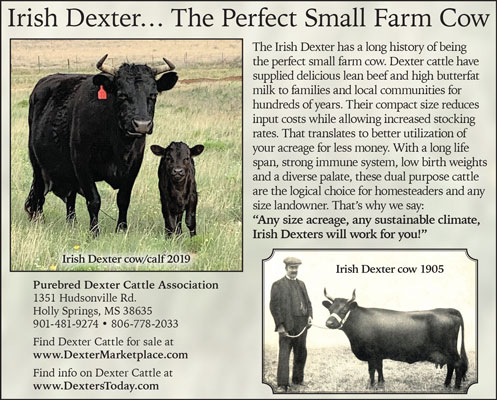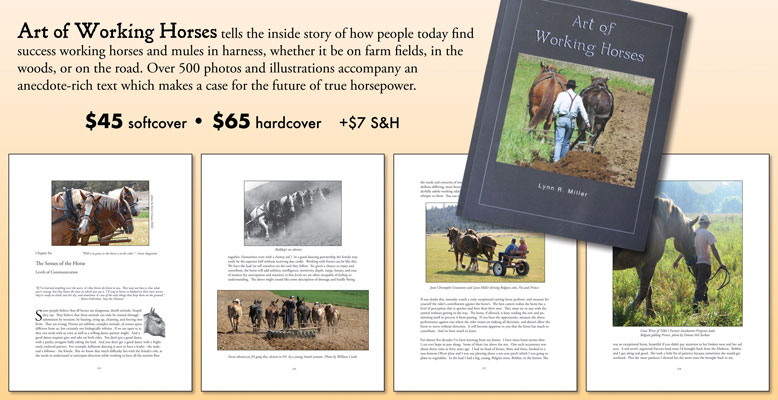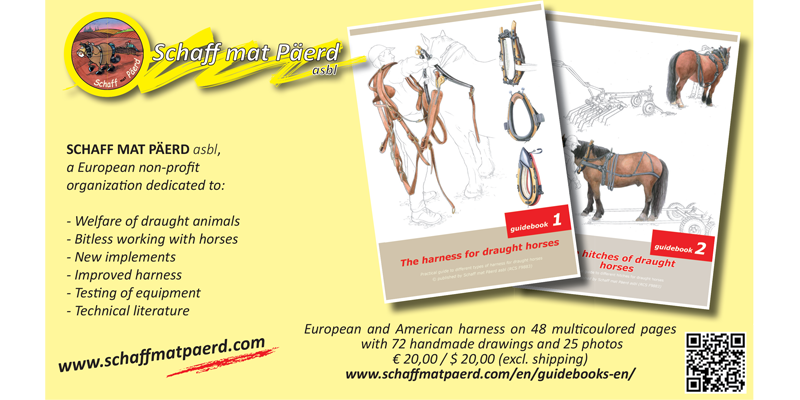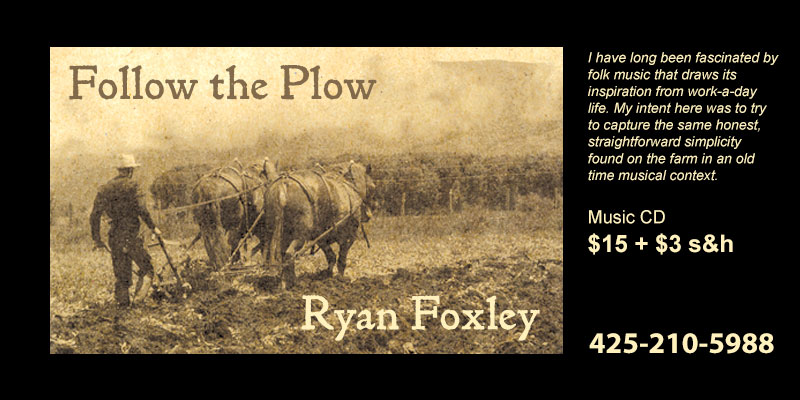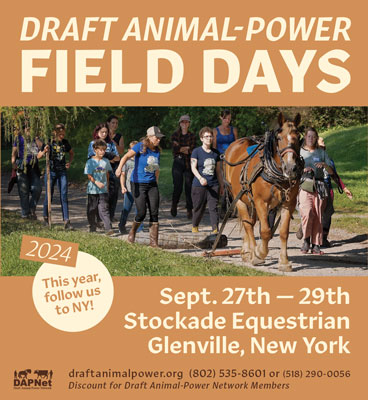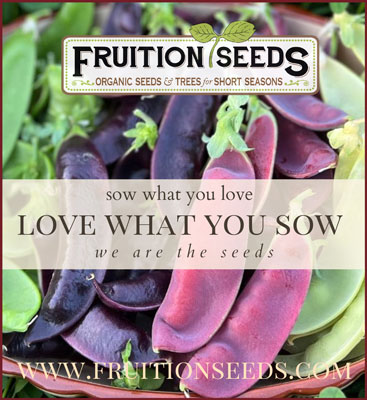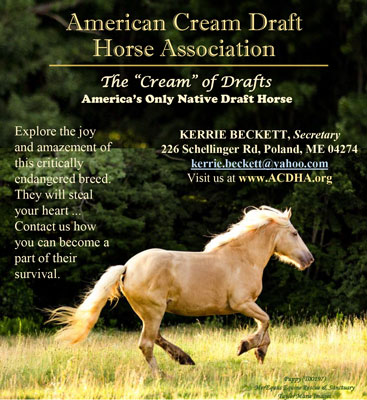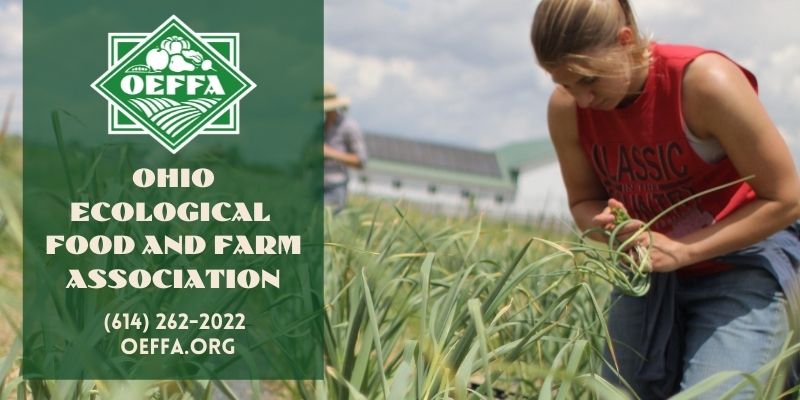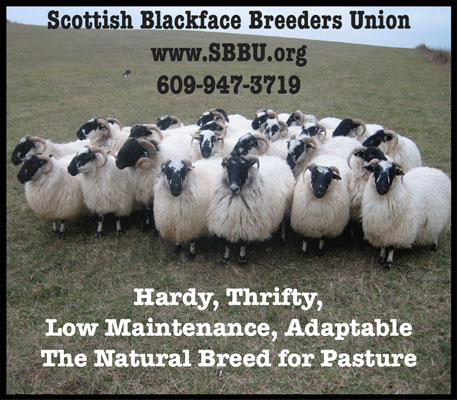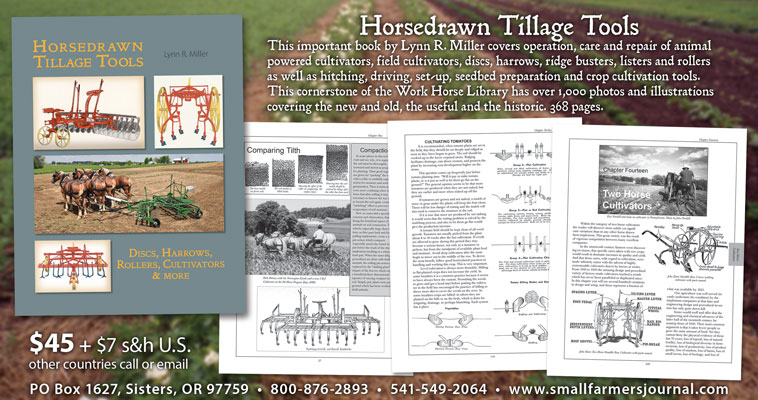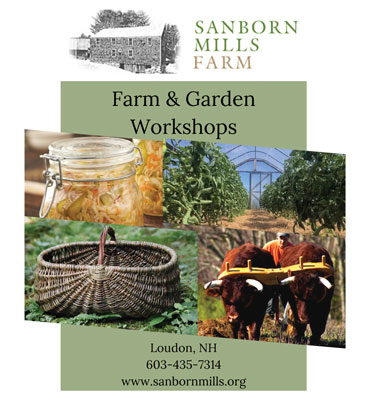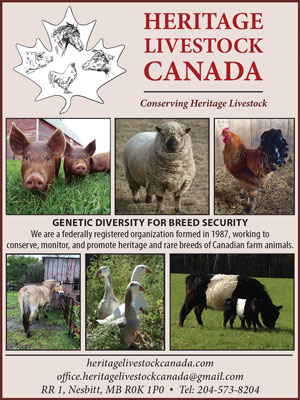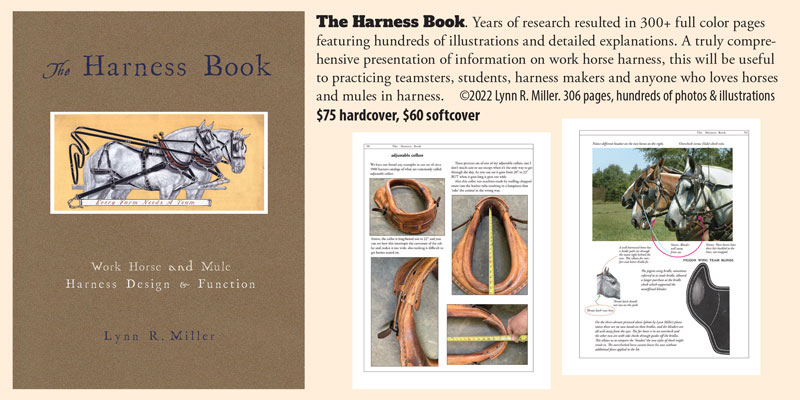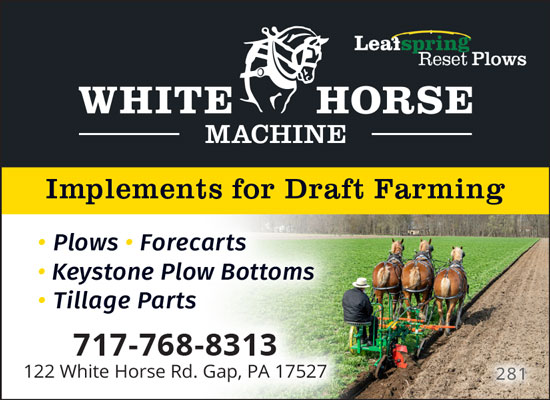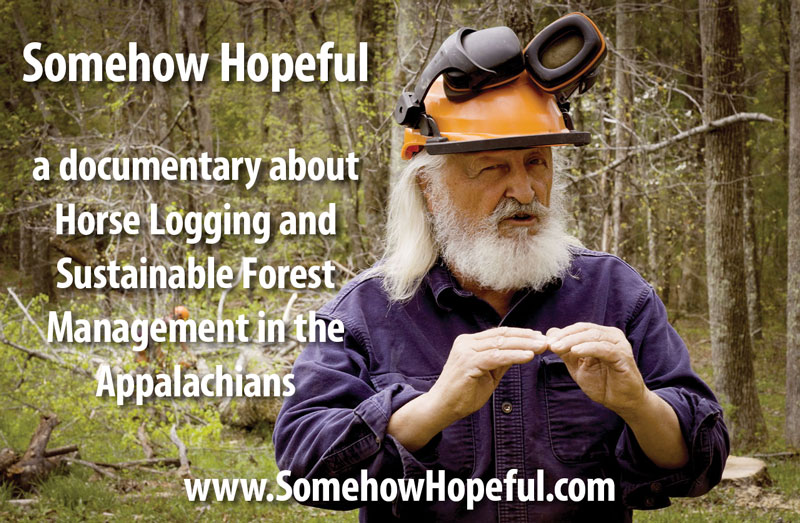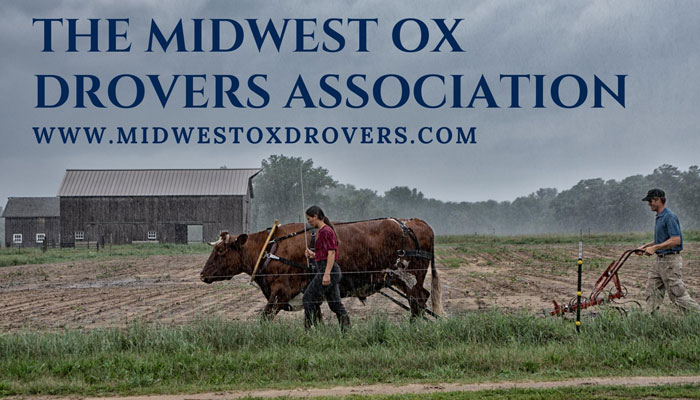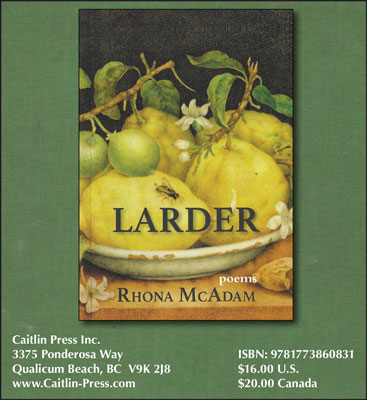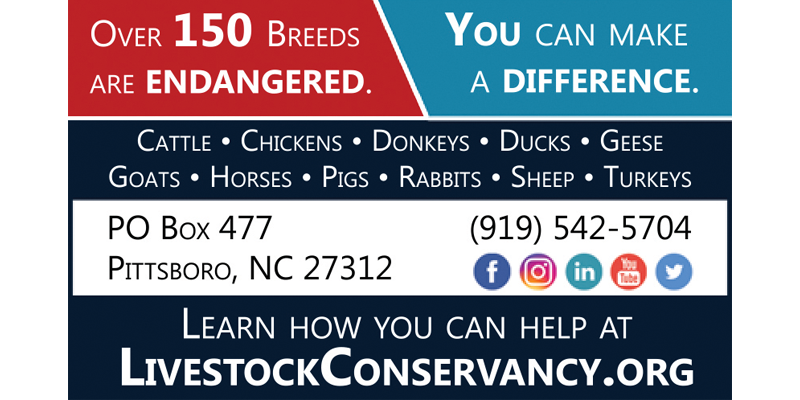MONDAY
April 15, 2024
Ground Driven PTOs
One of the ways tractors both gained and maintained their appeal is from the wider range of machinery they can power with the PTOs they carry. This definitely gave them the advantage over draft power. But is it going to stay that way? It may not have to be on a small farm. During the horsepower road trip Khoke and I went on a couple years ago, we got to see some examples from folks who knew which side of the fence they were on. We saw a number of machines that were reworked and reinvented to make them run off the power source of their choice, namely horsepower.
TUESDAY
April 16, 2024
Headlight Grape
One of the things long desired by Southern fruit growers is a good table grape, sufficiently resistant to leaf and fruit diseases to endure the climatic conditions of their section. Many varieties have been brought forward from time to time; but of the older sorts especially adapted to table use not one, either foreign or native, has yet proved successful over any large area. One of the most promising recent introductions in this field is the Headlight, which was originated by Prof. T.V. Munson, of Denison, TX, in 1895.
WEDNESDAY
April 17, 2024
John Deere Model HH Spreader
Check the adjustments on your spreader and make sure they are in proper operating condition. Hitch your team to the empty spreader to limber it up and see that it is working properly before loading. If you will turn the beaters over by hand before starting to the field, the spreader will start easier and will prevent throwing out a large bunch of manure when starting.
THURSDAY
April 18, 2024
Lost Apples
The mindboggling agricultural plant and animal diversity, at the beginning of the twentieth century, should have been a treasure trove which mankind worked tirelessy to maintain. Such has not been the case. Alas, much has been lost, perhaps forever. Here are images and information on a handful of apple varieties from a valuable hundred year old text in our library.
FRIDAY
April 19, 2024
American Milking Devons and the Flack Family Farm
On a sunny early September day I met Doug Flack at his biodynamic and organic farm, just South of Enosburg Falls. Doug is an American Milking Devon breeder with some of the best uddered and well behaved animals I have seen in the breed. The animals are beautifully integrated into his small and diversified farm. His system of management seems to bring out the best in the animals and his enthusiasm for Devon cattle is contagious.
Are you getting the SFJ Home & Shop Companion?
The Home & Shop Companion is a free weekly email newsletter. It features stories, handy hints, recipes, news, offers, projects, distractions and other stuff we think you’ll find interesting. The entire series is archived here on the website and is free to all to browse: Home & Shop Companion Archive.
SIGN ME UP FOR THE HOME & SHOP COMPANION!
Explore Small Farmer's Journal: Crops & Soil
Establishing Apples in the North Country
My apple orchard has only recently begun to bear fruit, but I have learned many things by the “school of hard knocks” which I wish I had known before. Perhaps these remarks may save some time and trouble for others thinking of setting out apple trees in a cold and demanding climate. Northwestern Maine, where I live, appears on the climate map as Zone 3, and area frost pockets even get down to -45 degrees F.
Reconstruction by Way of the Soil Part 5
This advantage of perennial irrigation is brought about by a permanent high level of the river above a dam or barrage placed in its course. Main canals lead off the heightened water from above the dam and minor canals distribute it. It makes constant use of the artificial high level of the river, and, using the water that flows in the river all the year round, it is obviously not wasteful but conservative. But there is one daring thing about perennial irrigation; it alters the age-long habit of river-made soils in arid countries. What it is made to do is, in fact, to treat these arid soils as if they were soils dependent upon frequent rain, for by means of locks and gates there is a giving of water every ten to twenty days.
Apple Cider and Its Preservation
A considerable quantity of malic and tannic acids are present in all apples. It is these that give the apples and juice the tart taste. It might be thought that the sweeter varieties are sweet on account of a greater amount of sugar, but this is not the case. Apples are sweet or sour depending on the amount of acids present. The color of the cider depends upon tannic acid. If the pulp be exposed to the air from twelve to twenty-four hours before pressing a darker color of the cider results. The action of the tannic acid together with the air causes darkening. Also, part of the cloudiness of cider is due to albuminous matter; tannic acid assists in precipitating this out and making it settle. Hence a juice high in this acid will be of a darker color and is more likely to be clear.
Erosion Controls part 1
It is a common conception that gully control means building check dams, planting trees, plugging gullies with brush, or directly applying to a gully some other individual control measure. This way of thinking focuses attention on devices that stop gullies rather than on ways of farming that prevent gully erosion. A broad, coordinated attack is in general necessary to keep gully erosion under control. A farmer who wishes to keep his fields free from gullies must give first consideration to proper land use and conservation farming on areas that contribute run-off to the gullies.
Making Sorghum Molasses
Growing sorghum doesn’t take much work, according to Buhrman. You plant it in the spring, work it a couple of times and that’s about all that’s required until late in the growing season. That is when the work begins. Before it is cut, all the stalks have to be “bladed” – the leaves removed from the stalks. It’s then cut, then the tassles are cut off, and the stalks are fed through a crusher. The crusher forces the juices out of the plant. The sorghum juice is then boiled in a vat for four to five hours until nothing is left but the syrup.
Cultivating Questions: Grow-Your-Own Mulch Part 2
In the Summer 2008 SFJ we reported on our initial experiment using the fallow field cover crops to generate enough mulch materials for a 380’ row of un-irrigated winter squash. Encouraged by the excellent crop growth and yield despite the dry, hot conditions of 2007, we repeated the experiment the following years, trying to determine the optimum ratio of land in straw producing cover crops to cash crop area. In 2009, we finally got it right: we seeded a 36’ wide strip of rye and medium red clover in September of 2008, then, in April, 2009, we skim plowed a 12’ wide area in the middle of the overwintering cover crops for planting the winter squash.
Marketable Cover Crops
Our cover crops have to provide the benefits of smothering weeds, improving soil structure, and replenishing organic matter. They also have to produce some income. For these purposes, we use turnips, mustard and lettuce within our plant successions. I broadcast these seeds thickly on areas where cover crops are necessary and let them do their work.
Bamboo: A Multipurpose Agroforestry Crop
The bamboos are gaining increased attention as an alternative crop with multiple uses and benefits: 1) domestic use around the farm (e.g., vegetable stakes, trellis poles, shade laths); 2) commercial production for use in construction, food, and the arts (e.g., concrete reinforcement, fishing poles, furniture, crafts, edible bamboo shoots, musical instruments); and 3) ornamental, landscape, and conservation uses (e.g., specimen plants, screens, hedges, riparian buffer zone).
Cultivating Questions: The Organic Cropping Systems Experiment at Cornell
This long-term cropping systems project is a collaborative effort between researchers, extension and farmers. Funded by the USDA Organic Agriculture Research and Extension Initiative, it explores the essential premise of organic farming, namely, the connection between healthy soil and healthy crops. Specifically, the Organic Cropping Systems (OCS) program, which includes long-term organic grain and vegetable experiments, tries to evaluate how varying intensities of cropping, cover cropping, tillage and compost affects soil quality, nutrient levels, insects, weeds, disease, yields and profitability.
Row 7 Seeds
Row 7 is a unique new seed company grounded in ‘the notion that deliciousness might just change the world.’ A seed company built by chefs and breeders striving to make ingredients taste better before they ever hit a plate. It’s a collaboration—a cross-pollination— based on a simple premise: they believe flavor can succeed where commodification has failed. That it can change how we all eat and, in turn, how we might grow.
A Beet Story
The beets that prompted this story grabbed my attention because they had been bred with flavor in mind. Specifically, these beets had been selected to be either very high or very low in geosmin, the simple twelve-carbon molecule that gives soil its distinctive earthy aroma. It’s long been known that beets have an earthy character; some people call them “dirt candy” while others say they just taste like dirt. Of the flavor components identified in beets, earthiness is the one that people most often dislike, so my doctoral advisor, Dr. Irwin Goldman, had wondered: If we bred a beet with less geosmin, would more people like it?
Cultivating Questions: High-Value Cover Cropping
Our winter workshops seem to generate a lot of interest in bioextensive market gardening among young growers. However, we sense an undercurrent of frustration because many of the participants do not have access to enough land to fallow half of the market garden. We hope that the following list of speculative suggestions will provide some encouragement to new vegetable farmers who cannot afford to take land out of production but want to take advantage of the bioextensive principles of rotational cover cropping, minimum-depth tillage, and bare fallowing.
Propagation by Means of Budding and Grafting Part 5
In making the resin and beeswax waxes, the materials are first broken up finely and melted together. When thoroughly melted, the liquid is poured into a pail or tub of cold water. It soon becomes hard enough to handle, and it is then pulled and worked until it becomes tough or “gets a grain,” at which stage it becomes the color of very light-colored manila paper. When wax is applied by hand, the hands must be well greased.
Soil Mining or Soil Building?
A program for the control of wind and water erosion has been set up in every part of the United States. Large scale erosion control demonstration projects are being established. Hundreds of engineers and agriculturists have been hired to supervise this work. CCC boys are doing much of the physical work in remodeling farms and watersheds, building terraces and dams, and planting trees for shelter-belt protection as a means of controlling wind and water erosion.
Purslane, Portahoopies and Plow Planted Peas
For those not familiar with this tasty, nutritious weed, purslane can be a real challenge to manage in vegetable crops for a number of reasons. The seeds of this weed remain viable for many years in the garden, and generally do not germinate until hot weather — that is, after many of the market garden crops have already been planted. To make matters worse, this succulent plant often reroots after cultivation. Purslane also grows so close to the ground that it is impossible to control by mowing.
Cultivating Questions: Grassfed Potatoes
Typically, we skimplow an overwintering cover crop of rye and vetch the beginning of April in preparation for this planting window. Shallowly undercutting the live cover crop at that time of year prevents the rye and vetch from removing the winter accumulation of moisture from the ground and preserves the soil structure created by the cover crop by leaving most of its root system intact.
Grow Cowpeas for Food Resilience
Cowpeas are a genus of beans that everyone in the middle and southern States ought to know about. They are a super-easy-to-grow, versatile, nutritious, highly edible family of beans that includes many cultivars of heritage, heirloom, and landrace flavors. Some you may have heard of before are the Black-eyed pea, Crowder pea, and Asparagus Bean which is a close relative from Asia. Just like green beans, there are vine and bush varieties of the cowpea, so keep that in mind when choosing which varieties to grow.
Peach
The Peach is a showy tree when in bloom. There are double-flowered varieties, which are as handsome as the dwarf flowering almond, and they are more showy because of the greater size of the tree. The flowers of the Peach are naturally variable in both size and color. Peach-growers are aware that there are small-flowered and large-flowered varieties. The character of the flower is as characteristic of the variety as size or color of fruit is.
Farming by Moon Sign
Planetary influence in planting seeds
Starting Seeds
From Dusty Shelves: A WWII era article from Farming For Security
Growing and Marketing Muskmelons
If melons are to be grown as one of the crops in a regular rotation, they should follow the leguminous crop that is grown for the purpose of adding humus and nitrogen to the soil. In regions where winter wheat and clover are grown, a rotation of wheat, clover, and melons is highly satisfactory. Another good rotation is oats, clover, melons, and corn. In regions where clover does not thrive and wheat and oats are not grown, a rotation of corn, cowpeas, and melons may be employed, or the rotation extended by seeding to grass after the melons are harvested.
Figs
Figs have been grown on the Pacific coast for much more than a century. Trees were probably at Loreto Mission, Lower California, before 1710, and reached the Alta California Missions soon after their establishment. Vancouver found Fig trees at Santa Clara in 1792. At the present time the Fig is cultivated in almost all parts of the state of California. The tree stands a range of temperature of from 18 degrees to 120 degrees Fahr., and the only portions of California really unsuited to its growth are certain cold or foggy districts. In the drier parts of the state it needs irrigation, as do other fruit trees. Some of the old Fig trees in California are of immense size. It is not uncommon to see trees with trunks of more than 2 feet in diameter. One tree in Stanislaus county is 60 feet in height, covers a circle 70 feet across, and has a trunk that girths 9 feet.
Barnyard Manure
The amount of manure produced must be considered in planning a cropping system for a farm. If one wishes to manure one-fifth of the land every year with 10 tons per acre, there would have to be provided two tons per year for each acre of the farm. This would require about one cow or horse, or equivalent, for each six acres of land.
Picking Beans
Beans are picked by hand. Payment is usually at a given rate per pound or basket. A worker’s earnings depend on the quantity of beans picked. In a given field, the quantity of beans a worker picks depends mostly on two things: How you do the work, and, how steadily you work. Skill in doing the work is acquired through practice of good methods. The things that a skilled picker does to make every move count are the following:
Gardening 101
If we had to buy all we eat there is no way we could afford it. And I like having my husband home too much to give him up to a high paying job half my life just so we can eat well. Good food is expensive. Grass fed beef and dairy, free range chickens, organic and non-GMO fruit, vegetables, grain, honey, and maple syrup. So, we skip the high paying jobs and live on less, spending our lives in each other’s company and growing what we eat.
Propagation by Means of Budding and Grafting Part 3
Grafting is the operation of inserting a cion (or scion) — or a twig comprising one or more buds — into the stock, usually into an incision in the wood. It is variously divided or classified, but chiefly with reference to the position on the plant, and to the method in which the cion and stock are joined. In reference to position, there are four general classes: 1. Root-grafting, 2. Crown-grafting, 3. Stem-grafting, and 4. Top-grafting.
Fodder and Pasture Plants
At first only such plants were grown as would serve for human food; natural meadows and pastures provided for domestic animals. Even now there are large areas where no special efforts are made to secure food for stock. With increasing population, however, more ground must be devoted to cereals for human food, and the value of land rises. Natural pastures largely disappear and the farmer must grow other crops as food for stock during different seasons. The cultivation of fodder and pasture plants has reached its greatest perfection in temperate regions, where the animals cannot graze during the winter.
Cultivating Questions: No-Till Garlic
One reason the no-till garlic may have been able to produce such a massive root system was due to the undisturbed soil being riddled with earthworm holes. Not wanting to destroy the beautiful soil structure created by the earthworms, we prepared the harvested garlic patch for planting a cover crop by fencing in our small flocks of laying hens to shred-and-spread the mulch of wheat straw in the no-till pathways. The birds also lightly tilled all this moisture conserving organic matter into the surface of the soil so a pass or two with the springtooth harrow was all that was necessary before seeding the winter cover of rye.
Cabbage
Cabbage is the most important vegetable commercially of the cole crops, which include cabbage, cauliflower, Brussels sprouts, kale, kohlrabi, collard, broccoli, and many others. It also ranks as one of the most important of all vegetable crops and is universally cultivated as a garden, truck and general farm crop. The market for cabbage, like that for potatoes, is continuous throughout the year, and this tends to make it one of the staple vegetables.
Mower Modifications for Cover Crop Cocktails
We have a double standard for planting density in the bio-extensive market garden. We plant all the vegetables in widely spaced rows to insure plenty of moisture, fertility and air circulation for each plant. For the cover crops in the fallow lands, we take just the opposite approach, seeding at a high density to quickly provide ground cover, weed suppression, and biomass. One reason we have been slow to adopt cover crop cocktails is the very low recommended seeding rate — sometimes as little as 30 lbs per acre — in order to give all of the different species in these diverse mixes lots of room to grow. The mental shift to planting cover crops at a density comparable to our widely spaced vegetables has not come easily.
Cucumber
Cucumbers will thrive in any good soil not extremely heavy nor sandy. Good corn or wheat land, if in gardening condition with respect to tilth and drainage, will answer. Or for the earliest crop, a situation with a more pronouncedly sandy soil may serve best. In most parts of America the field crop of Cucumbers may be grown from seed planted in the open ground after danger of frost is past. Put 6 to 12 seeds in the hill, the hills being 4 by 6 feet apart.
Wild Potatoes and Calcium
Wild potatoes bring increased calcium for better tubers.Have you ever cut into a potato to find a dark spot or hollow part? Early research shows that these defects are likely the result of calcium deficiencies in the potato — and that tuber calcium is genetically linked to tuber quality.
Cultivating Questions: Farmers of Forty Centuries
Recently I saw a book called “40 Centuries.” It was a history of rice farming in the Far East. It showed that due to the nitrogen fixing effects of a certain kind of algae that some rice paddies had actually increased in productivity after 4,000 years of more-or-less continuous cultivation. So, here’s my question. Do you think any form of tillage agriculture, even shallow tillage, is capable of sustainable use over that sort of time frame and without any trucked in inputs?
Cultivating Questions: the Well-Being of Small Farmers
The Gregson’s question about sustaining the health and well-being of farmers kind of hit home as I had to learn how to contend with a chronic digestive disorder when we first started farming here. While this minor handicap definitely limited our farming efforts, it also helped us to plan some slack into our operation right from the beginning. It forced us to focus our energy where it would be most effective and encouraged us to rely more on observation and management than muscle to get the job done – lessons we might not have otherwise learned until later in life. As a result, we may have been slower than most in bringing the market garden into full production, but our limitations, in a round about way, may have encouraged us to bring some biological efficiencies into play which have made the work easier and more rewarding in the long run.
Even More Promising New Fruits
For many years there has been a strong tendency in the American fruit trade to urge that fruit growers reduce the number of varieties in their commercial plantations. When commercial fruit growing was developing out of the old-time family orchard, with its succession of varieties ripening throughout the season, such advice was undoubtedly good for the average individual planter, but there appears good ground for the belief that a point has been reached in several of our orchard fruits where a wider range of season and quality would result in a steadier net income from the fruit crop, and therefore in a sounder business condition in the fruit industry in many sections.
Unfermented Grape Juice
Two general methods are employed in preparing pasteurized grape juice; these are known as the hot-press method, which is the older, and the cold-press method, which is simpler and more generally applicable. The essential difference between the two methods is indicated by the terms employed to designate them. In the hot-press method the crushed fruit is heated and the juice removed by pressing the fruit while hot; in the cold-press method no heat is employed when extracting the juice. By the cold-press method clear, brilliant juices are obtained, while the use of the hot-press method secures a somewhat larger yield of dark, more or less viscid juice.
ZÈA
ZÈA (an old Greek name for some common cereal, probably spelt). The genus is founded upon the single polymorphous cultivated species Zea Mays, Maize or Indian Corn, whose origin is unknown but is suspected by some to be Teosinte. Most of the evidence points to Mexico as the region in which it originated and from which it spread. Under the head of Corn are given the botanical characters of the genus, a classification of subspecies of Zea Mays, and a discussion of Sweet Corn and Pop Corn.
Antique Hand-Tinted Vegetable Art
Antique Hand-Tinted Vegetable Art
Yaupon Tea
See our article about CatSpring Yaupon in SFJ Vol. 43 Issue 3.
Perfumery Gardening
“Synthetic” or chemical perfumery materials are the more or less perfect artificial reproductions of organic compounds used in perfumery. If it were possible in all cases and with perfect success to compound these substances, the production of floral perfumes would soon be at an end, as the chemical process would be sure to be cheaper than the horticultural. But nature knows how to add some touches which the chemist’s art cannot imitate, and even where synthetic manufacture is possible, the result is in general regarded as a cheaper substitute. At the same time, sentimental reasons count considerably in favor of the natural perfume, and considering, further, that some perfumes cannot be imitated chemically, there is no present cause to apprehend the extinction, or, in view of increasing demand, even the decline, of the industry of producing natural perfumery oils.
The Flax-Fiber Revolution
Flax is a native species of the Pacific Northwest and was widely used by Native Americans for basket weaving, rope making, and clothing. With the coming of Europeans the flax industry began to flourish around 1868 when numerous flax mills were established in the fertile Willamette Valley. These mills produced high quality linen, linseed oil used for paints and finishes, oil cake for cattle feed, as well as twine and rope, among countless other products.
Farming by the Square Inch
The whole secret of the growth of these products before the regular season is in the cropping and the soil. Every inch of soil bears at least three crops a year, each of them anticipating the season and therefore producing fancy prices. The soil is regarded by the gardeners as of so much value that, as explained, there is a special clause in the lease that they are at liberty to cart it away to a depth of eighteen inches if they give up the farm at the termination of the agreement. The ground is so precious that no space is allowed for a wheelbarrow path. The loads are all carried in baskets and not a square inch is allowed to go to waste in this rich garden.
Yaupon Tea
During a severe drought in 2011, JennaDee Detro noticed that many trees on the family cattle ranch in Cat Spring, Texas, withered, but a certain evergreen holly appeared vigorous. It’s called a yaupon. “The best we can tell is that they enjoy suffering,” Detro says with a laugh. “So this kind of extreme weather in Texas — and the extreme soil conditions — are perfect for the yaupon.” Detro began researching yaupon — a tree abundant in its native range, from coastal North Carolina to East Texas — and discovered that the plant contains caffeine and has a remarkable history.
Cultivating Questions: The Costs of Farming With Horses vs. Tractors
A couple of questions at this year’s small group tour made us realize that we had not thoroughly cultivated the topic of work horse costs in this column. Tom Padua, recently hired to manage a CSA in New Jersey and convert it to the bio-extensive system, wanted to know how much hay, grain and minerals we feed our work horses. Miriam Gieske, a research intern at the Rodale Institute, took Tom’s questions to the next level. After browsing through the SFJ handouts at the end of the day, she wanted to know which costs more, farming with horses or tractors?
Crops for Those “Unfarmable” Spaces
Whether located in a suburban setting, or a rural one with limited available acreage, small farmers are always facing a perennial problem – not enough room. However, right under a small farmer’s nose, on almost every city lot or nook and cranny of an oddly shaped rural parcel, there’s a home for some fruit or vegetable. Maybe that sliver of ground is only a few square feet, has limited sun, is in a ditch or against a wall or fence, but some certain garden plant or animal would love to call it home.
Cultivating Questions: Grow-Your-Own Mulch Part 1
For the past 25 growing seasons, we have used the dryland practices described in this article to direct seed and transplant vegetables all season long without irrigation. Of course, rainfall has been necessary to finish out some of our longer term crops, and yields have generally been better in wet weather. Nevertheless, we consistently get good stands of produce without precipitation or watering in the plants, and our income from dryland fruits and vegetables has increased every year without expanding acreage. Although not a substitute for irrigation, the following moisture preserving ideas may possibly be helpful to growers making do with limited access to water or simply desiring to reduce the size of their hydrological footprint.
Critters in the North Country Woodlot
Your thoughts on the use of a forest may differ from what the wild animals in it are thinking, and it is good to be aware of the problems. Animal browse is of two kinds. Critters may eat the buds, foliage, twigs, and leaders, which are accessible only on young trees. Or, they may gnaw the bark of both old and young trees. Foliage and leader browse may change the composition of a young forest, but the trees eventually outgrow the problem. Bark browse is a problem for many years more, though some trees are not affected because their bark is not appetizing.
Cane Grinding: An Age-Old Georgia Tradition
Most sugar cane is processed in refineries to give us molasses, brown sugar, and various kinds of white sugar. However, some South Georgia farms that raise sugar cane still process it the old way to produce the special tasting sweetener for their own food. One such farm is the Rocking R Ranch in Kibbee, Georgia. It is owned by Charles and Patricia Roberts and their sons. The process they use has not changed in the past 100 years. This is how it is done.
Cultivating Questions: Grow-Your-Own Mulch Part 3
To weatherproof more of the market garden in 2011, we tried a variation on the grow-your-own mulch system we developed for producing winter squash in the fallow fields. We discovered it was possible to mulch row crops like tomatoes, peppers, carrots, onions and leeks by moving windrows of rye into the pathways. Although awkward to handle at first, we soon got the hang of picking up an 8-10’ length of twisted rye straw in our arms and walking it from the fallow lands into the adjacent vegetable field.




